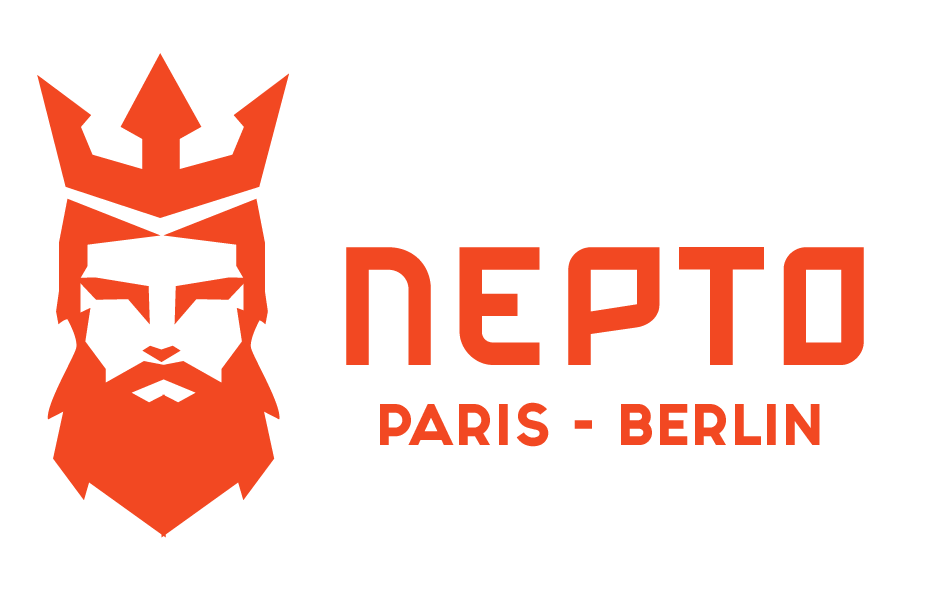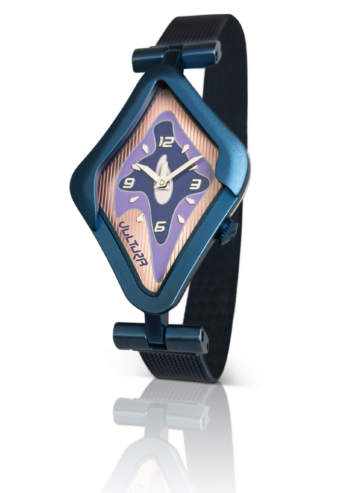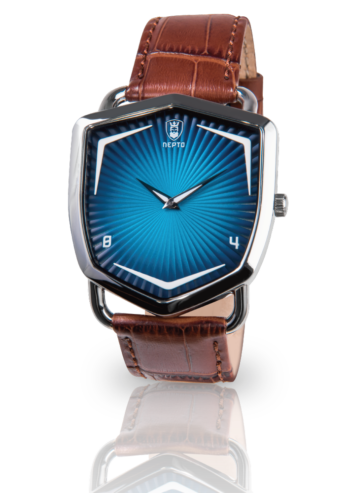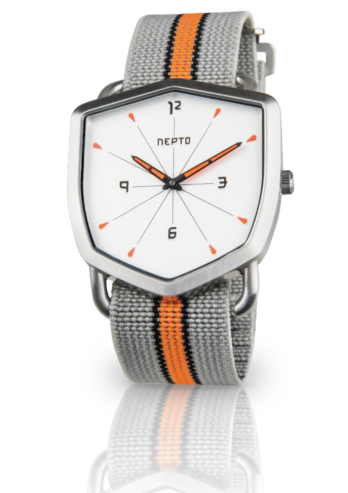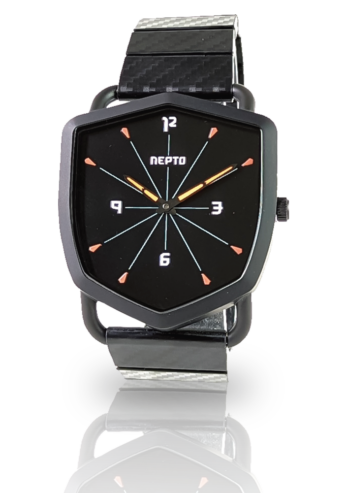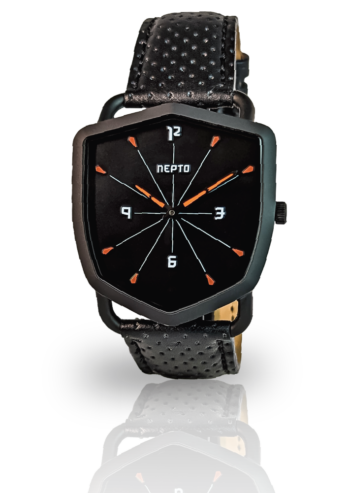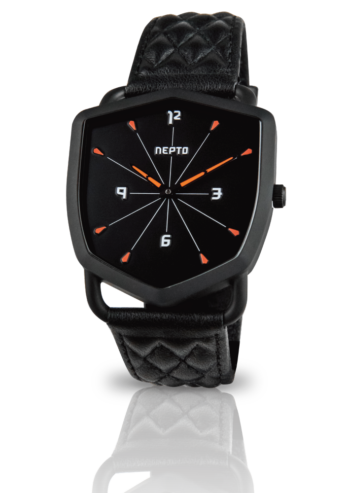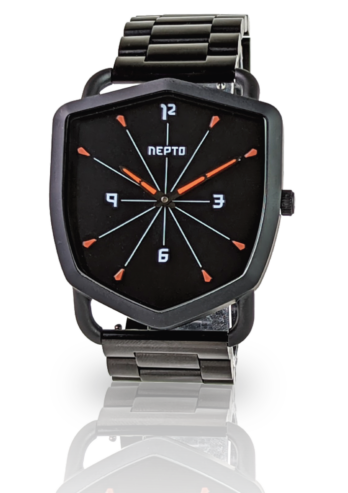It is with great pride that we share with you an article in The New York Times featuring NEPTO! A big thank you to the journalist Nazanin Lankarani who presented us in this world renowned newspaper. And many thanks also to the NEPTO team! Because this exposure in The New York Times is a great achievement. Featuring in the New York Times is very rewarding, it’s a newspaper with a great reputation, but more so because NEPTO shares the vision and ideas of this great newspaper. Link of the Online Version : https://www.nytimes.com/…/watches-packaging-breitling…
Full article :
From Tiffany’s blue box to Cartier’s red one, product packaging can produce powerful brand associations and create a visual appeal that awakens desire for the objects inside. When it comes to high-end watches, oversize boxes in glossy exotic woods or covered in leather are industry mainstays, less for their practical utility than to help build a sense of luxury and reinforce the perceived quality of the products they contain. In the resale market, they impart an added sense of authenticity for buyers, who assign more value to a watch that is sold with its original box and papers. Now, with consumer attitudes in favor of eco-friendly products, some brands are thinking “outside the box” and making sustainability a central component of a business strategy in which the packaging itself is a selling point. “Big glossy wooden boxes are so dated,” said Jeremia Adatte, a designer and administrator at Adatte Design, an industrial design studio in Lausanne, Switzerland. “Who wants to see trees cut down to make a watch box?” Adatte, a family-owned business founded by Mr. Adatte’s father, Georges, has been producing packaging for clients in different industries since 1991. “Packaging is more important today than ever,” Mr. Adatte said. “Just look how popular unboxing videos are on social media.” With 20 graphic artists and designers, the company designs and produces packaging, display accessories and corporate gifts made from recycled and nonrecycled material. A partner factory in Shanghai handles nearly all of Adatte’s production, with some sourcing and finishing done locally in Switzerland or in Italy, France, Germany, Spain and the Czech Republic. “Coming up with an original idea takes years of research and development, whether it is a new concept or a design to meet specs for a client,” Mr. Adatte said. “Our approach is innovation-focused, both in design and in sourcing new materials.” Adatte’s website lists a number of watch brand clients, including Breitling, TAG Heuer and MB&F MAD Gallery, and the company said it had designed a variety of innovative packages, objects and display options for them. However, Mr. Adatte said he cannot be specific about projects, and most brands, when asked, would not even identify their suppliers. “When you are creating a box with ‘poor’ materials, like cardboard or upcycled plastics, you need a strong design and that is attractive enough for an expensive watch,” Mr. Adatte said. But designing sustainable packaging is not just about image. It can have a financial impact on the brand’s bottom line, especially when the solution is scalable. “Today, brands look for innovative packaging because their customers care about waste,” Mr. Adatte said. “But beyond improving their image, lightweight, easily transportable boxes save brands money.” Breitling’s chief marketing officer, Tim Sayler, said that reducing the company’s carbon footprint and its shipping costs were winning arguments in its decision to adopt new packaging. Last month it introduced a foldable watch box made entirely of recycled PET, or polyethylene terephthalate, a plastic from bottles. “Transportation is always an issue in sustainability,” Mr. Sayler said. “Our new box ships flat so it takes less space.” A functional piece, its side and front wings fold up and fasten with snaps to create a 3-D shape. An inside pocket was designed to store the digital certificate of ownership that the brand recently introduced for its watches. A travel pouch, also made of recycled PET, is included. The box may be recycled again, according to Breitling, if it is taken to a facility that handles recycled PET. “This box,” Mr. Sayler said, “was designed by our team of in-house designers who work on everything from watches to collaterals to boutiques, with external input from partners who advised us on design and material sourcing.” He would not identify the partners, but said the design process took 18 months. Next year Breitling expects to use around 200,000 of the boxes, made by a German packaging supplier in China, for new watches. And, in an effort to reduce shipments, the boxes will be dispatched directly to boutiques or subsidiary markets rather than to Breitling’s Swiss headquarters, Mr. Sayler said. Breitling is not the first brand to take this focus. In 2018, IWC Schaffhausen designed boxes that “contain 90 percent less plastic than previously, and 80 percent of the plastic remaining is recycled,” Franziska Gsell, IWC’s chief marketing officer and chairwoman of its Sustainability Committee, wrote in an email. The weight and volume of the boxes also were reduced by 30 percent. Why not abandon plastic altogether? The Paris-based watch brand Nepto uses only recycled cardboard and paper for its boxes, according to its founder, Vincent Ifrah, 33, who holds a degree in materials engineering. Nepto makes about 1,000 watches a year, with a starting price of 189.90 euros ($224). “Our boxes are 100 percent recycled and recyclable, and they look good, so you will not want to throw them away,” Mr. Ifrah said. “There is really no reason to use plastic to make watch boxes today since we get the same quality using cardboard,” he said. “Ours are made in France at a very low cost, proof that it is perfectly doable.” Recycled cardboard also is the packaging material most widely used by Oris, a Swiss watch brand. And, according to Rolf Studer, its co-chief executive, the business will become CO2-neutral next year by managing travel, reducing energy usage and several other steps. “When we started talking about sustainability 10 years ago, everyone would yawn,” Mr. Studer said from the factory in Hölstein, Switzerland. “Now everyone is talking about it.” In partnership with Pacific Garbage Screening, a nonprofit association building a floating platform designed to capture ocean plastics, Oris last year released the Clean Ocean Limited Edition diver watch in a series of 2,000 (priced at 2,200 Swiss francs, the equivalent of $2,400). The watch came with a case back decorated with a medallion of recycled PET and was sold in a box made partly of marine algae and covered with recycled paper originally used to filter algae in Venice’s Grand Canal. A travel pouch of recycled cotton is to be added next year.


